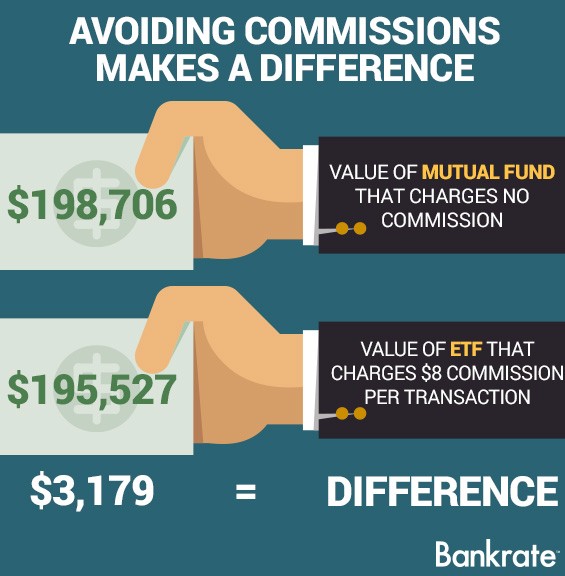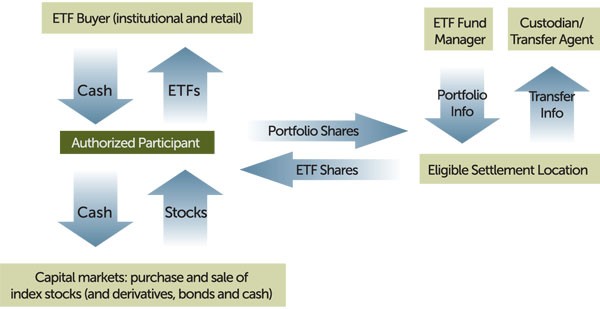Your ETFs and the Tax Man
Post on: 4 Июнь, 2015 No Comment

Ron Rowland | Thursday, April 14, 2011 at 7:30 am
This post was published 3 years, 10 months ago.
If you haven’t filed your income tax return yet, “The Day” is almost here! Millions of Americans are sweating right now as they frantically sort out deductions, credits and amortizations.
Mutual funds have long been a sore spot at tax time. Investors sometimes wonder if the diversification and potential performance outweigh the extra hassle. They have a point. If you own a fund for a long time and have your dividends and distributions reinvested, you’d better keep good records.
Exchange traded funds can’t completely eliminate tax headaches. They do, however, make the load substantially lighter. Today I’ll explain how this works and try to answer a couple of common ETF tax questions.
First, I must remind you that I’m not a CPA, nor can I give personal tax advice. You should definitely consult a professional about your own situation. The discussion below just covers some general principles.
Sometimes tax preparation is best left to professionals.
Someone Has to
The tax code is riddled with exemptions and special treatment for various groups. Generally, though, if you realize profits from your ETF in a calendar year, you will have to report it as income.
Suppose you bought an ETF at $10 a share in 2009, and sold it at $15 a share in 2010. You made a $5 per share profit. Congratulations! You also now have a “capital gain,” and the IRS will want its share.
Note that capital gains are taxed in the year the trade is “realized,” which may be different than the year you bought your ETF. This is one of the prime arguments in favor of long-term investing. You don’t have to pay tax on a gain until the gain is actually in your hands, right?
Right … sometimes.
Mutual funds are infamous for making “capital gains distributions” to shareholders — even those who still own the fund and have not otherwise “realized” any gains. They do this so the fund itself doesn’t have a tax liability, which makes some sense but also creates distortions. For example, buy a fund just before a distribution, and you can end up paying tax on gains made by other people.
Not fun at all.
The ETF structure largely solves this problem. Yes, ETFs can and do have capital gains distributions. They tend to be small and infrequent, though. Some ETFs go years without the need for a distribution.
As I said above, there are always exceptions to the rule. One common scenario is when you own an ETF or a mutual fund within an IRA, 401(k), or other retirement plan. Generally speaking, your tax liability will be deferred (though not eliminated) until you withdraw the profits.
K-1? What’s That?
Another exception has to do with ETFs that use futures and other derivative instruments to implement their strategies. This is the case in many commodity and currency-related ETFs. If you own any such products, you may get a mysterious form called a “Schedule K-1.”
For some reason, the K-1 form really frightens some people. They don’t know what to do with it and start to panic. As someone who has seen many K-1s, I can tell you there is no need to worry. It is really not so complicated.
The K-1 is not as frightening as some people think.
Any investment classified as a “partnership” for tax purposes is required to give each investor a K-1 every year. They must deliver a form to you even if you received no income from it that year. This applies even for IRAs, 401(k)s, and retirement accounts.
The same is true for all kinds of partnerships: Small businesses that are “S” corporations, limited partnerships that own real estate or energy-related assets, and many more. K-1 forms are actually quite common. What’s important is the numbers, not the form itself.
Let me say it again: The mere fact that you receive a K-1 from an ETF does NOT mean you owe taxes on that ETF. You may have a tax liability — or you may not. You could even have a loss that offsets other kinds of income. Those kinds of K-1s aren’t so bad.
If you hold the ETF inside your IRA, the K-1 information is probably unnecessary from your perspective. The ETF sponsor would rather not have to send it to you. They don’t have a choice, unfortunately.
Commodity and Currency Funds
Most commodity and currency funds generate their returns by holding futures contracts. The IRS requires these funds to be “marked to market” at the end of each year, at which time any open gains or losses are apportioned to investors. This means the K-1 can show gains, even if you didn’t sell any shares.
Gold funds are another special case because the IRS taxes gold as a “collectable” instead of as an “investment.” So pay special attention to the forms you get on your gold holdings.
MLP ETFs and ETNs
Last week, my colleague Nilus Mattive, discussed some of the implications of K-1s in his column “Tax day tips for MLP investors .”
Master limited partnerships (MLPs) are even trickier because of the various state tax liabilities where the MLP operates. And off-the-shelf tax software might not fully alert you about these state taxes.
If you choose to hold MLPs through an exchange traded note (ETN) like JP Morgan Alerian MLP ETN (AMJ), you will receive a 1099 instead of a K-1.
The downside is that distributions from an ETN do not get the same potential favorable capital gains tax treatment as direct investments in MLPs. All gains are taxed as regular income (with rates up to 35 percent), regardless of how long the positions are held.

So that is a trade-off you need to make: Better tax treatment on distributions or better treatment at tax preparation time.
I warned you about one MLP ETF in my “Six ETFs to Consider Dumping Today ” article, and I’ll repeat that warning today …
Unlike the ETNs I just discussed, the Alerian MLP ETF (AMLP) is structured as a C-corporation. This allows it to make distributions that receive favorable tax treatment, and it also issues the preferable 1099 instead of a K-1. The problem is that since it is a C-corporation (the only ETF structured that way), it has to pay the 35 percent federal corporate tax rate plus various state taxes.
Advertisement
In other words, you have to give up about 35 percent of your capital gains so that AMLP can pay its taxes and then pay your own tax bill on top of that. For me, that is much too high of a price for tax-deferred distributions.
How Do You Know
What You’ll Get?
1099 or K-1? Sometimes you have to dig for the answer.
Even though the K-1 is not nearly as terrible as some people think, it is still nice to know whether to expect one. Unfortunately, I’m not aware of any quick way to tell whether a particular ETF issues K-1 forms or the more common 1099. The ETF (or ETN) prospectus will typically reveal this information, but you have to dig for it. If that fails, then call the sponsor.
You also can’t be sure who will send you the K-1, even if you know you should get one. Sometimes the information comes to you directly from the ETF sponsor, and sometimes it is sent through the brokerage firm that holds your account.
Short of diving into the prospectus, here are a few tips:
- ETFs with the letter “L.P.” in their name are set up as limited partnerships and usually issue K-1 forms annually.
- ETFs that focus on commodities (crude oil, grains, etc) or foreign currencies almost always report your tax information with a K-1 form.
- If your ETF is built around sophisticated trading strategies like volatility or spreads, you will probably be getting a K-1.
- ETNs usually issue a 1099, but with a lot of extra fine print.
- More traditional ETFs, those that invest directly in stocks or bonds, usually issue 1099s.
I sincerely wish all this could be more straightforward. The best answer may be to get your tax return prepared by a professional. Otherwise you just have to hope Congress someday gives us a simpler tax system.
Best wishes,
Ron
Ron Rowland is widely regarded as a leading ETF and mutual fund advisor. You may have read about Mr. Rowland and his strategies in publications such as The Wall Street Journal. The New York Times. Investor’s Business Daily. Forbes.com. Barron’s. Hulbert Financial Digest and many more. As a former mutual fund manager from 2000 to 2002, Ron was a pioneer in using ETFs inside of mutual funds. Today, he is the editor of International ETF Trader . dedicated to helping investors use ETFs to profit from ever-changing global market conditions.














